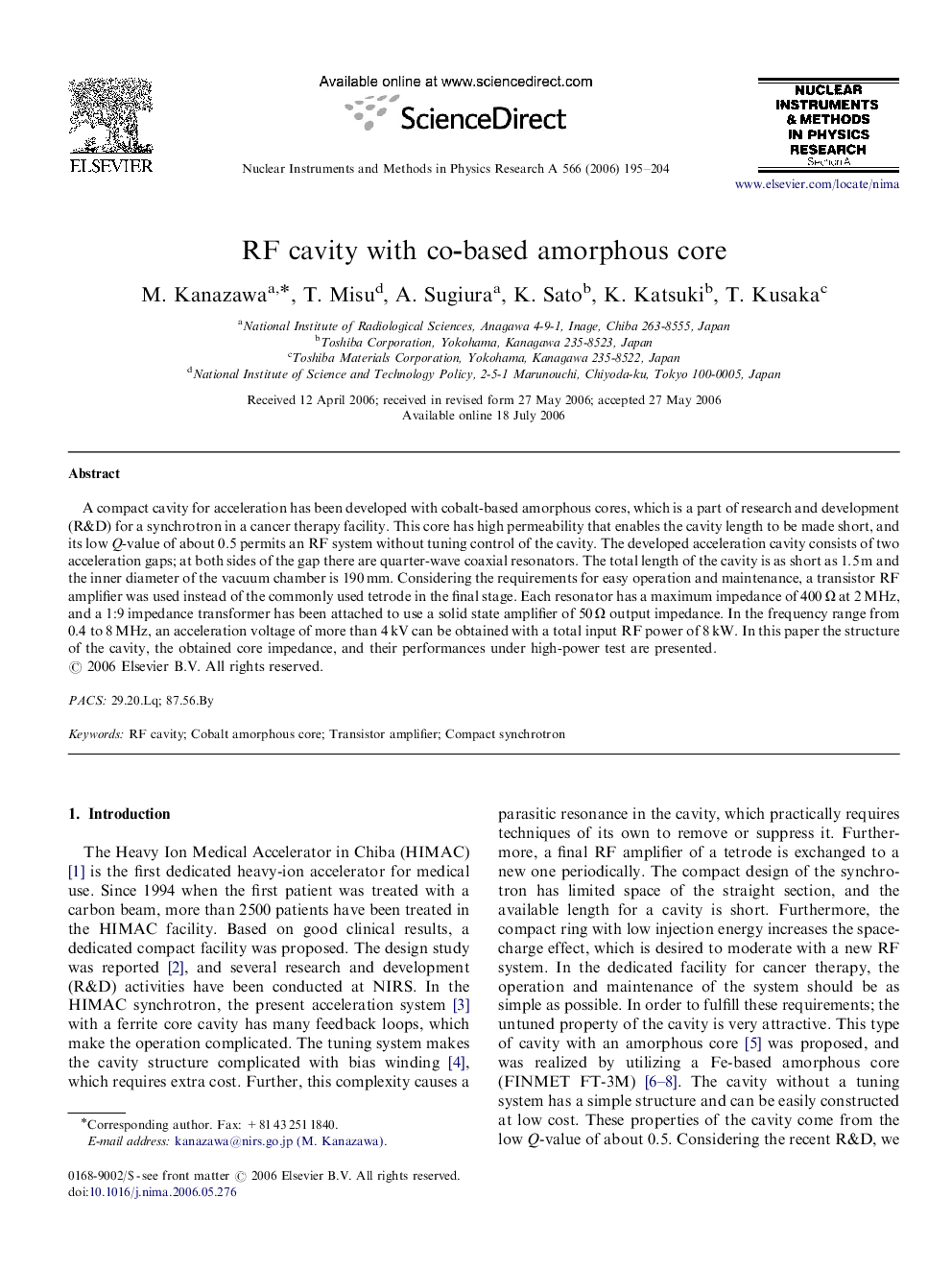| Article ID | Journal | Published Year | Pages | File Type |
|---|---|---|---|---|
| 1832584 | Nuclear Instruments and Methods in Physics Research Section A: Accelerators, Spectrometers, Detectors and Associated Equipment | 2006 | 10 Pages |
A compact cavity for acceleration has been developed with cobalt-based amorphous cores, which is a part of research and development (R&D) for a synchrotron in a cancer therapy facility. This core has high permeability that enables the cavity length to be made short, and its low Q-value of about 0.5 permits an RF system without tuning control of the cavity. The developed acceleration cavity consists of two acceleration gaps; at both sides of the gap there are quarter-wave coaxial resonators. The total length of the cavity is as short as 1.5 m and the inner diameter of the vacuum chamber is 190 mm. Considering the requirements for easy operation and maintenance, a transistor RF amplifier was used instead of the commonly used tetrode in the final stage. Each resonator has a maximum impedance of 400 Ω at 2 MHz, and a 1:9 impedance transformer has been attached to use a solid state amplifier of 50 Ω output impedance. In the frequency range from 0.4 to 8 MHz, an acceleration voltage of more than 4 kV can be obtained with a total input RF power of 8 kW. In this paper the structure of the cavity, the obtained core impedance, and their performances under high-power test are presented.
